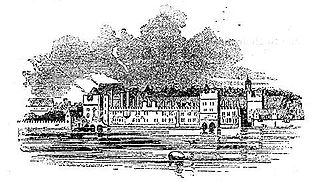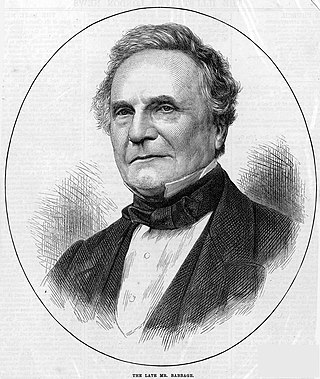
The Institution of Electrical Engineers (IEE) was a British professional organisation of electronics, electrical, manufacturing, and Information Technology professionals, especially electrical engineers. It began in 1871 as the Society of Telegraph Engineers. In 2006, it changed its name to the Institution of Engineering and Technology (IET).
The Institution of Mechanical Engineers (IMechE) is an independent professional association and learned society headquartered in London, United Kingdom, that represents mechanical engineers and the engineering profession. With over 120,000 members in 140 countries, working across industries such as railways, automotive, aerospace, manufacturing, energy, biomedical and construction, the Institution is licensed by the Engineering Council to assess candidates for inclusion on its Register of Chartered Engineers, Incorporated Engineers and Engineering Technicians.

The Institution of Engineering and Technology (IET) is a multidisciplinary professional engineering institution. The IET was formed in 2006 from two separate institutions: the Institution of Electrical Engineers (IEE), dating back to 1871, and the Institution of Incorporated Engineers (IIE) dating back to 1884. Its worldwide membership is currently in excess of 158,000 in 153 countries. The IET's main offices are in Savoy Place in London, England, and at Michael Faraday House in Stevenage, England.
The Engineering Council is the UK's regulatory authority for registration of Chartered and Incorporated engineers and engineering technician, holding a register of these and providing advice to students, engineers, employers and academic institutions on the standards for registration and procedures for registration. It is also responsible for the accreditation of educational and training programs, delegating this responsibility to licensed member institutions.

The University of Engineering and Technology, Taxila is a public university located in Taxila, Punjab, Pakistan. It was established in 1975 as a campus of the University of Engineering and Technology, Lahore and chartered as an independent university in 1993. It offers bachelor's, master's and doctoral degrees in engineering and applied sciences.
The Sydney Accord is an international mutual recognition agreement for qualifications in the fields of engineering technology.
The Energy Institute (EI) is a professional organization for engineers and other professionals in energy-related fields. The EI was formed in 2003 by the merger of the Institute of Petroleum (dating back to 1913) and the Institute of Energy (dating back to 1925). It has an international membership of about 20,000 people and 200 companies. Its main office is at 61 New Cavendish Street, London. EI is a registered charity with a Royal Charter.
Engineering & Technology (E&T) is a science, engineering and technology magazine published by IET Services, a wholly owned subsidiary of the Institution of Engineering and Technology (IET), a registered charity in the United Kingdom. The magazine is issued 10 times per year in print and at least 10 times per year in an app. The E&T website is updated regularly with news stories. E&T is distributed to the 140,000 plus membership of the IET around the world.
The Society of Engineers was a British learned society established in 1854. It was the first society to issue the professional title of Incorporated Engineer. It merged with the Institution of Incorporated Engineers (IIE) in 2005, and in 2006 the merged body joined with the Institution of Electrical Engineers to become the Institution of Engineering and Technology.
Inspec is a major indexing database of scientific and technical literature, published by the Institution of Engineering and Technology (IET), and formerly by the Institution of Electrical Engineers (IEE), one of the IET's forerunners.
In the United Kingdom, a Chartered Engineer (CEng) is an engineer registered with the UK's regulatory body for the engineering profession, the Engineering Council. Chartered Engineers are degree-qualified or can demonstrate equivalent work-based learning and have gained the appropriate professional competencies through education and working experience. Demonstration of competence is defined in the UK Standard for Professional Engineering Competence, assessed through professional review of academic qualifications and professional development. Formal, non-formal and informal learning can be assessed. The title Chartered Engineer is protected in the UK under law by means of the Engineering Council’s Royal Charter and Bye-laws. As of 2019 there are approximately 180,000 engineers registered as a Chartered Engineer. Chartered Engineers are registered through Professional Engineering Institutions (PEIs) licensed by the Engineering Council which are relevant to their industry or specialism.

Savoy Place is a large red brick building on the north bank of the River Thames in London. It is on a street called Savoy Place; Savoy Hill and Savoy Street run along the sides of the building up to the Strand. In front is the Victoria Embankment, part of the Thames Embankment. Close by are Savoy Hill House, the Savoy Hotel and Waterloo Bridge. There are commanding views over to the South Bank and the London Eye.
The Institution of Electronic and Radio Engineers (IERE) was a professional organization for radio engineers. It was originally established in 1925 as the Institute of Wireless Technology. It renamed itself British Institution of Radio Engineers in 1941, and eventually Institution of Electronic and Radio Engineers. In 1988, it merged with the Institution of Electrical Engineers (IEE), and in another merger in 2006 became the Institution of Engineering and Technology (IET).
John Edwin Midwinter OBE FRS FREng was a British electrical engineer and professor, who was President of the Institution of Electrical Engineers from 2000 to 2001.
Proceedings of the Institution of Electrical Engineers was a series journals which published the proceedings of the Institution of Electrical Engineers. It was originally established as the Journal of the Society of Telegraph Engineers in 1872, and was known under several titles over the years, such as Journal of the Institution of Electrical Engineers, Proceedings of the IEE and IEE Proceedings.

The Charles Babbage Premium was an annual award "for an outstanding paper on the design or use of electronic computers".





